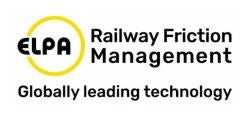In Gmund am Tegernsee in Bavaria, unbearable train squealing has been depriving inhabitants of sleep in this friendly tourist town since the old fleet of trains has been replaced with new Alstom Lint trains. It has now been almost a year and a half since the inhabitants could enjoy a peaceful sleep.
Several technologies have been examined and tested after the vocal demands of the citizens’ initiative Endstation Lint to put an end to rail screeching and restore peace in this tourist community. None of the tried trackside or on-board solutions have provided satisfactory results.
WONROSTM technology (standing for wear and noise reduction at source) was invited to try and reduce the noise. With a long track record of resolving rail squeal, it was ‘just another day at the office’ for ELPA.
Competitive technologies have failed because it is not as easy as it sounds. It takes a comprehensive approach to manage railway friction well. WONROSTM is the only technology to be built on two essential pillars of managing friction: composite materials and application devices. It is the only harmonious combination of the two that delivers optimal results.
It is well understood that friction modifiers with a higher proportion of solid particles provide better protection against wear and other negative friction phenomena. ELPA’s proprietary Composite Hardly-Fluid Compounds or CHFC contain over 40% solid particles, which is several times more than a typical competitive product. The supporting application technology is globally the only one that can apply composite materials with such a high proportion of solid particles.
WONROSTM is the first technology that served the railways, with the technology providing a complete solution for managing friction that assumes responsibility for the results. It is the CHFC that delivers unmatched results. The formula has not been changed since the inception of the technology, because it delivers optimal anti-noise, anti-wear, and anti-vibrations results. The application devices has been evolving for over two decades and the intellectual know-how is protected with over 30 patents.
In Gmund am Tegernsee, the technology has been providing consistent curve squealing elimination since march 2021. Inhabitants also noticed that vibrations causing glasses to shake in the closets stopped immediately after the installation of the CL-E1 applying Composite Hardly-Fluid Compound, type DBM-KL. Additionally, the infrastructure has measured a rail gauge wear reduction which generates savings, so the technology has, in part, already been paid back.
A case study has been written to provide a detailed explanation and can be obtained from our website.

